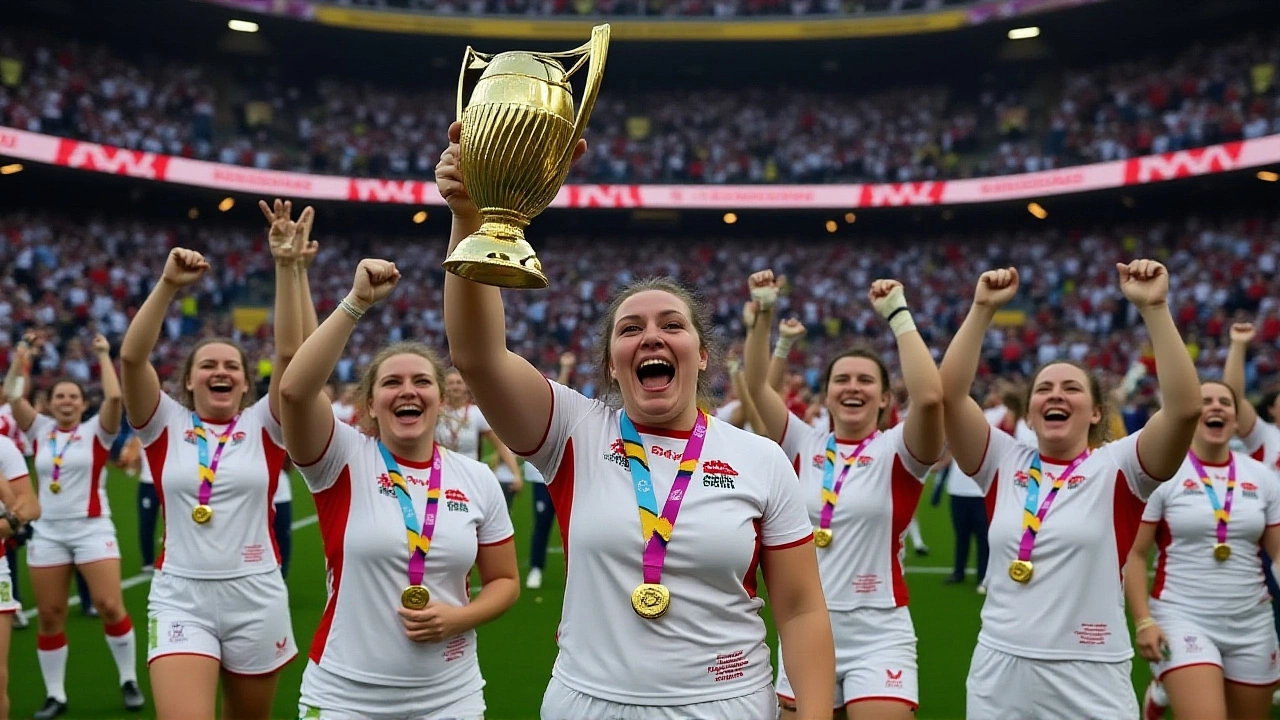Women's Rugby World Cup
When talking about Women's Rugby World Cup, the premier international tournament for women's rugby union teams, held every four years and showcasing the sport's top talent. Also known as Women’s Rugby World Cup, it brings together nations from around the globe to compete for the coveted trophy. This event Women's Rugby World Cup encompasses international competition, events where teams or athletes represent their countries, demands elite conditioning, and fuels the growth of women's sports, athletic competitions where female athletes compete at elite levels. It also sits squarely within the rules and culture of Rugby Union, a full‑contact team sport played with an oval ball and 15 players per side, borrowing its scoring system, set‑pieces, and tactical depth. Together these entities form a network: the World Cup drives interest in women's sports, women's sports push governing bodies to invest in Rugby Union, and Rugby Union provides the framework for the tournament.
What makes the Women's Rugby World Cup special?
First off, the tournament isn’t just a series of matches—it’s a platform that amplifies voices and inspires participation at the grassroots level. When a nation like New Zealand or England lifts the Webb Ellis Cup, the win ripples through schools, clubs, and community pitches, encouraging girls to pick up a ball for the first time. The competition also showcases tactical evolution; teams now blend traditional forward power with fast‑paced backline play, reflecting broader trends in the sport. Over the past decade the World Cup has seen record‑breaking attendances and broadcast deals that bring the game into living rooms worldwide, proving that audience appetite for high‑quality women's rugby is growing fast. Moreover, the event often aligns with social initiatives—charity partnerships, gender‑equality campaigns, and youth development programs—which deepen its societal impact.
Looking at the archive of articles on our site, you’ll notice a mix of stories that touch on the tournament’s many angles. Some posts dissect game‑changing moments, like a last‑minute try that turned the tide for a underdog side. Others explore the business side—sponsorship deals, ticket pricing, and stadium upgrades—that keep the event sustainable. A few pieces even dive into player welfare, discussing how athletes balance intense training with recovery, especially during the high‑pressure World Cup schedule. Together these pieces paint a picture of a competition that is as much about on‑field drama as it is about off‑field progress.
Below, you’ll find our curated collection of articles that cover everything from historic milestones and standout performances to practical tips for aspiring players and insights into the sport’s economic ecosystem. Whether you’re a die‑hard fan, a newcomer wanting to understand the basics, or a player looking for preparation advice, the posts ahead will give you a well‑rounded view of what the Women's Rugby World Cup represents today and where it’s headed tomorrow.
